Wooden pergola swings are a beautiful and functional addition to any backyard or garden. They provide a shady spot to relax and enjoy the outdoors, and they can also add a touch of elegance to your landscape. In this article, we will discuss the different types of wooden pergola swings available, how to choose the right one for your needs, and how to install and maintain it.
Pergola Design Features
Wooden pergola swings offer a unique blend of durability, aesthetics, and comfort. Unlike metal or plastic swings, wooden structures possess a natural charm that complements any outdoor space. Moreover, wood is highly customizable, allowing for a wide range of designs and finishes to suit personal preferences.
Size and Shape Variations
Pergola swings come in various sizes and shapes, catering to different needs and spaces. Smaller swings, suitable for cozy corners or balconies, typically measure around 5 feet in length and width. Larger swings, designed for spacious patios or gardens, can extend up to 10 feet or more, providing ample seating for multiple people.
Shape variations include rectangular, square, and octagonal designs. Rectangular swings offer a classic and versatile option, while square swings provide a more compact and space-efficient solution. Octagonal swings, with their unique and eye-catching shape, add a touch of elegance to any outdoor area.
Wood Type Considerations
The choice of wood for a pergola swing is crucial as it determines its durability, appearance, and maintenance requirements. Cedar, known for its natural resistance to rot and insects, is a popular choice for outdoor structures. Redwood, another durable option, offers a rich reddish hue that complements many garden designs.
Teak, renowned for its exceptional durability and resistance to weathering, is a premium choice for pergola swings. However, its higher cost may make it less accessible for some budgets. Pressure-treated pine, a more affordable option, provides adequate protection against decay and insects, making it a suitable choice for budget-conscious consumers.
Swing Construction and Assembly: Wooden Pergola Swing
Constructing a wooden pergola swing requires meticulous planning and careful execution. The materials used should be durable and weather-resistant to withstand outdoor elements. The assembly process involves several steps, each requiring specific tools and techniques.
Materials and Quantities
The following table lists the materials and their corresponding quantities required to build a wooden pergola swing:
| Material | Quantity |
|---|---|
| Pressure-treated lumber (4×4 posts, 2×6 beams, 1×6 slats) | As per design specifications |
| Swing hangers | 4 |
| Swing chains or ropes | 8 feet per swing |
| Lag bolts | As per design specifications |
| Carriage bolts | As per design specifications |
| Washers | As per design specifications |
| Nuts | As per design specifications |
Swing Customization and Accessories
Pergola swings can be customized to suit your personal style and needs. You can paint or stain the wood to match your décor, or add decorative elements like cushions, pillows, and throws. You can also add accessories like a canopy or side curtains to provide shade or privacy.
Here are some ideas for customizing your pergola swing:
Painting or Staining
Painting or staining the wood is a great way to change the look of your swing. You can choose any color you like, and you can even paint or stain different parts of the swing different colors. If you want to protect the wood from the elements, you can apply a sealant after you paint or stain it.
Decorative Elements
You can add decorative elements to your swing to make it more comfortable and stylish. Cushions, pillows, and throws can make your swing more comfortable to sit on, and they can also add a splash of color. You can also add a canopy or side curtains to your swing to provide shade or privacy.
The wooden pergola swing provides a comfortable place to relax and enjoy the outdoors. To enhance its longevity and protect it from the elements, consider installing wooden pergola covers. These covers offer protection from rain, snow, and UV rays, ensuring your swing remains in pristine condition for years to come.
Accessories
There are a number of accessories that you can add to your pergola swing to enhance its functionality and aesthetics. Some popular accessories include:
- Canopies: Canopies provide shade from the sun and rain, making your swing more comfortable to use on hot or rainy days.
- Side curtains: Side curtains can provide privacy and protection from the wind, making your swing more comfortable to use on windy days.
- Cup holders: Cup holders can be added to your swing to keep your drinks within reach.
- Lights: Lights can be added to your swing to make it more visible at night.
Installation and Maintenance
Installing a pergola swing is a straightforward process that requires careful site selection and preparation. Choose a level, well-drained area with adequate clearance for the swing’s movement. Dig holes for the support posts according to the manufacturer’s instructions and secure them with concrete. Assemble the pergola frame and attach the swing using the provided hardware.
Regular maintenance is essential to extend the life of the swing. Clean the swing regularly with a mild soap solution and rinse thoroughly. Inspect the wood for signs of rot or decay and treat any affected areas promptly. Weatherproofing the wood with a sealant or paint can protect it from the elements. During winter or extended periods of non-use, store the swing in a dry, protected location.
Maintenance Procedures
– Monthly: Clean the swing with a mild soap solution and rinse thoroughly.
– Quarterly: Inspect the wood for signs of rot or decay and treat any affected areas promptly.
– Annually: Weatherproof the wood with a sealant or paint.
– Winter: Store the swing in a dry, protected location.
Safety Considerations
Pergola swings are a great way to relax and enjoy the outdoors, but it’s important to take safety precautions to avoid accidents.
Regular inspections and maintenance are essential to ensure the swing’s safety. Check the swing for any loose bolts, screws, or other hardware. Inspect the chains or ropes that support the swing for any signs of wear or damage. Also, check the wooden beams for any cracks or splinters.
, Wooden pergola swing
- Never overload the swing.
- Do not allow children to use the swing without adult supervision.
- Keep the swing area clear of obstacles.
- Do not swing too high or too fast.
- Get off the swing before it comes to a complete stop.
, Wooden pergola swing
By following these safety guidelines, you can help ensure that your pergola swing is a safe and enjoyable place to relax.
Pergola Swing Design Inspirations
Pergola swings have become increasingly popular in recent years, adding a touch of style and relaxation to outdoor spaces. From modern to traditional and rustic designs, there’s a pergola swing to complement any backyard or patio.
Here is a gallery of pergola swing designs with high-quality images and brief descriptions of each design, highlighting its unique features and style:
Modern Pergola Swings
- Clean lines and geometric shapes: Modern pergola swings often feature clean lines and geometric shapes, creating a sleek and contemporary look.
- Minimalist design: Modern pergola swings often have a minimalist design, with a focus on functionality and simplicity.
- Neutral colors: Modern pergola swings often come in neutral colors, such as black, white, or gray, which can easily complement any outdoor décor.
Traditional Pergola Swings
- Ornate details: Traditional pergola swings often feature ornate details, such as carved wood or wrought iron.
- Classic shapes: Traditional pergola swings often have classic shapes, such as a rectangular or octagonal shape.
- Warm colors: Traditional pergola swings often come in warm colors, such as brown, red, or green, which can add a touch of coziness to any outdoor space.
Rustic Pergola Swings
- Natural materials: Rustic pergola swings often use natural materials, such as wood or stone.
- Reclaimed wood: Rustic pergola swings often use reclaimed wood, which can add a touch of character to any outdoor space.
- Earthy colors: Rustic pergola swings often come in earthy colors, such as brown, green, or gray, which can blend seamlessly with any natural setting.
End of Discussion
Whether you are looking for a place to relax and enjoy the outdoors or a way to add a touch of elegance to your landscape, a wooden pergola swing is a great option. With so many different styles and designs to choose from, you are sure to find the perfect one for your needs.

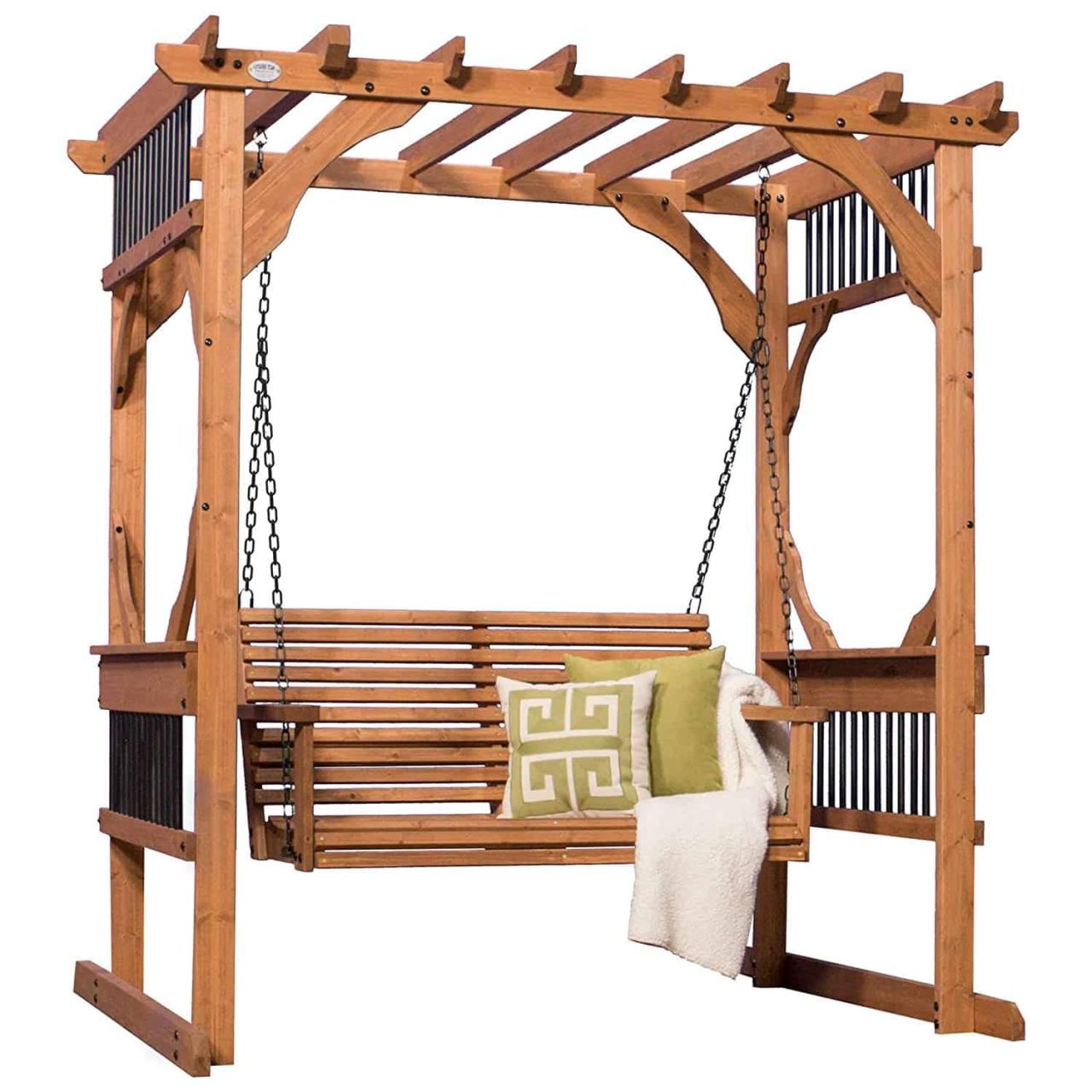
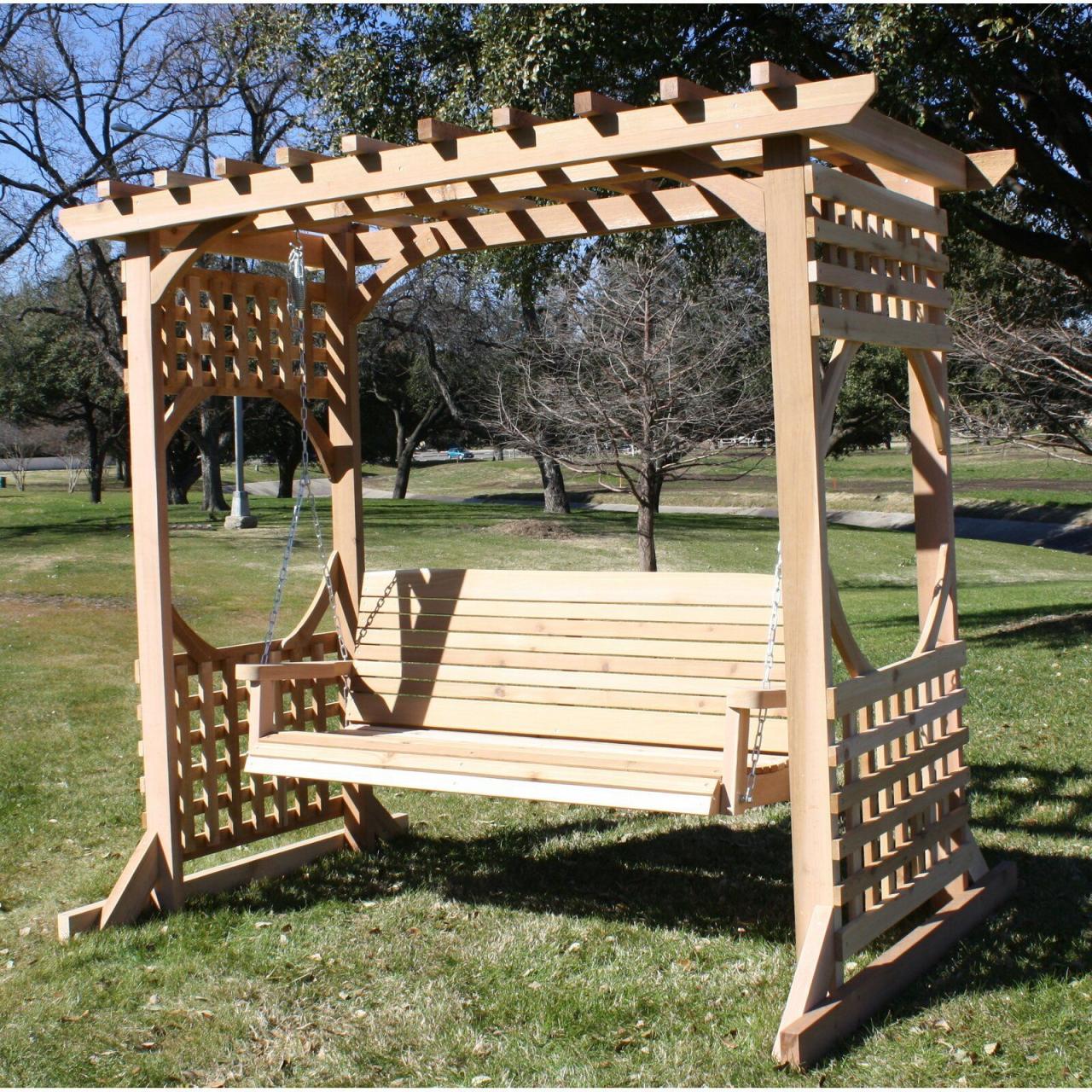
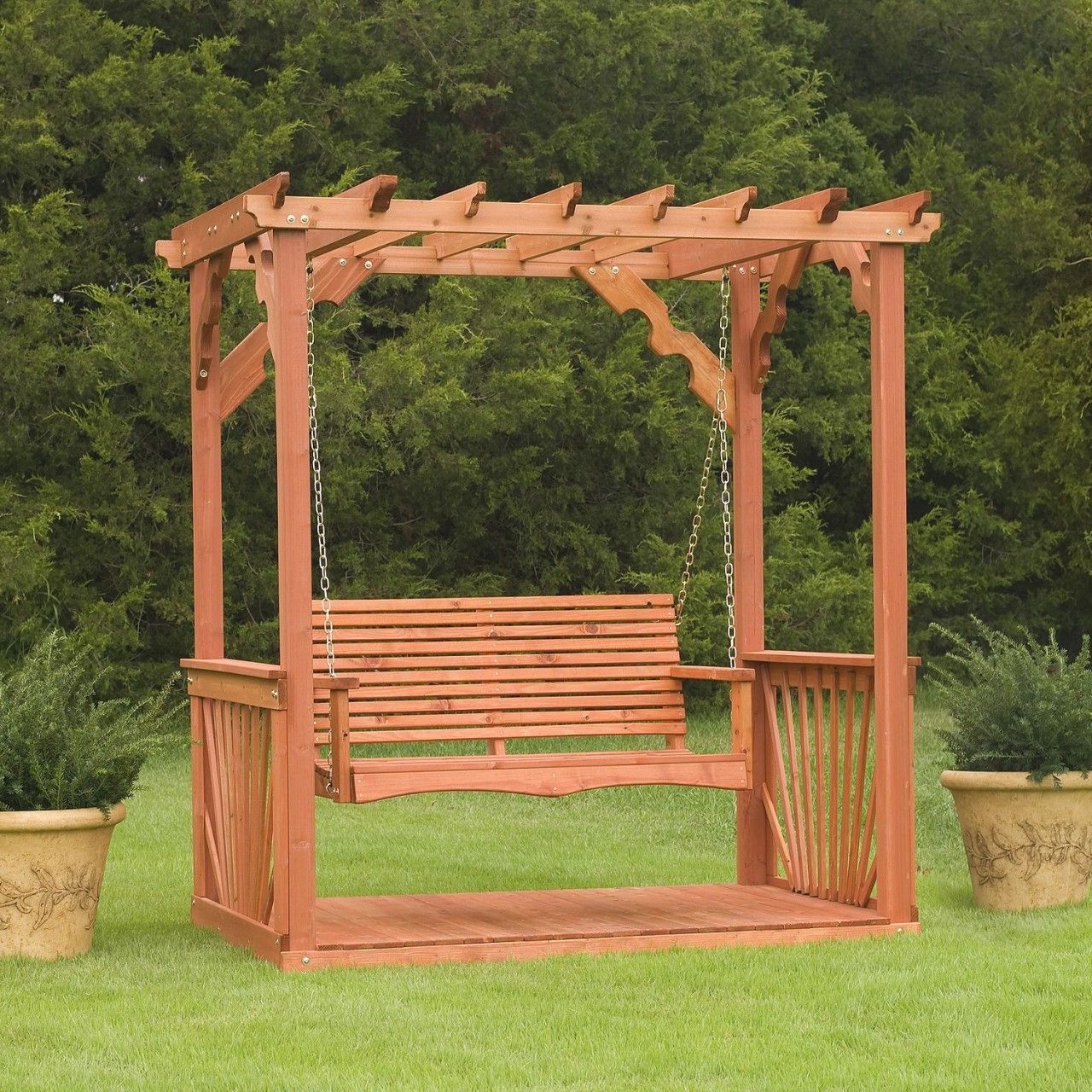
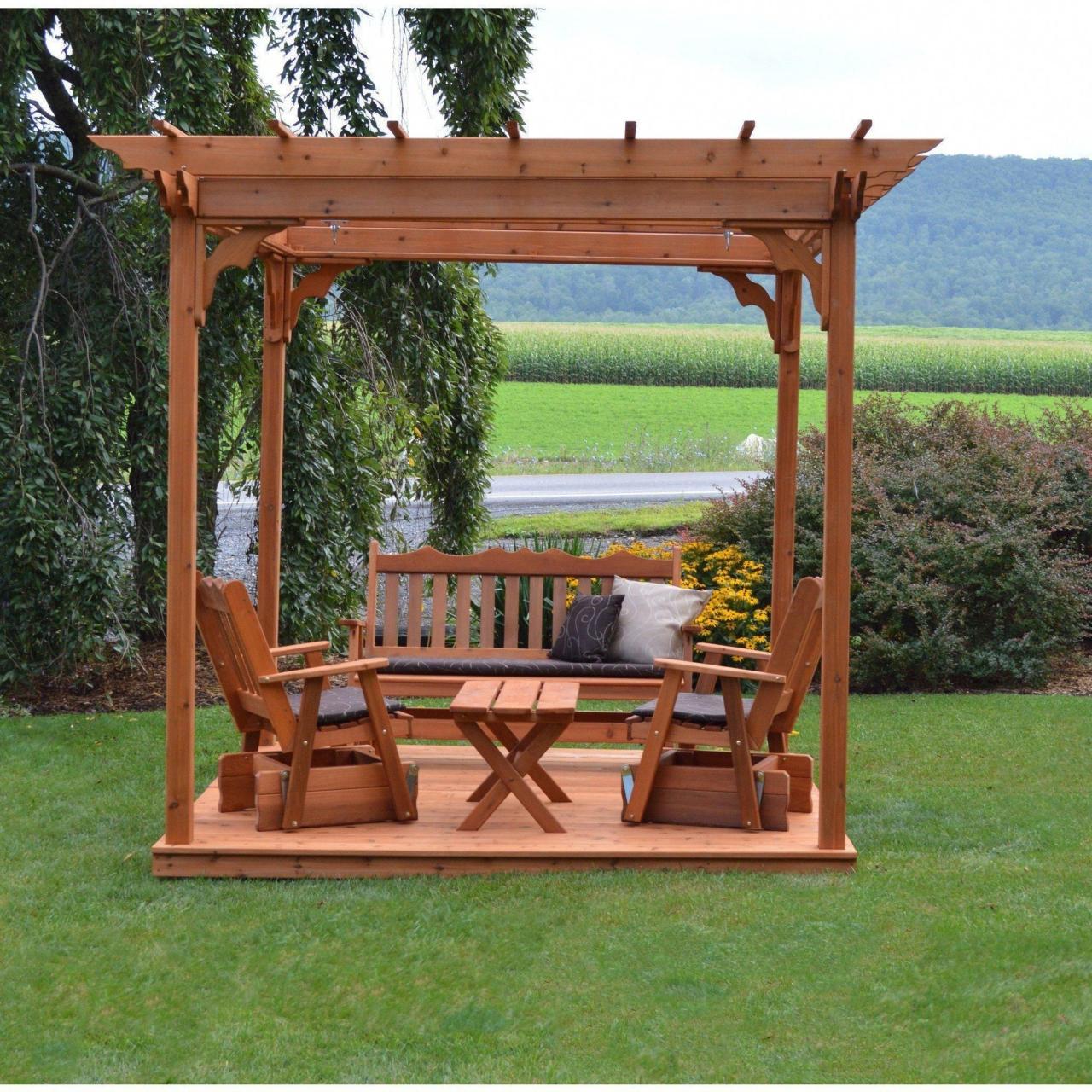
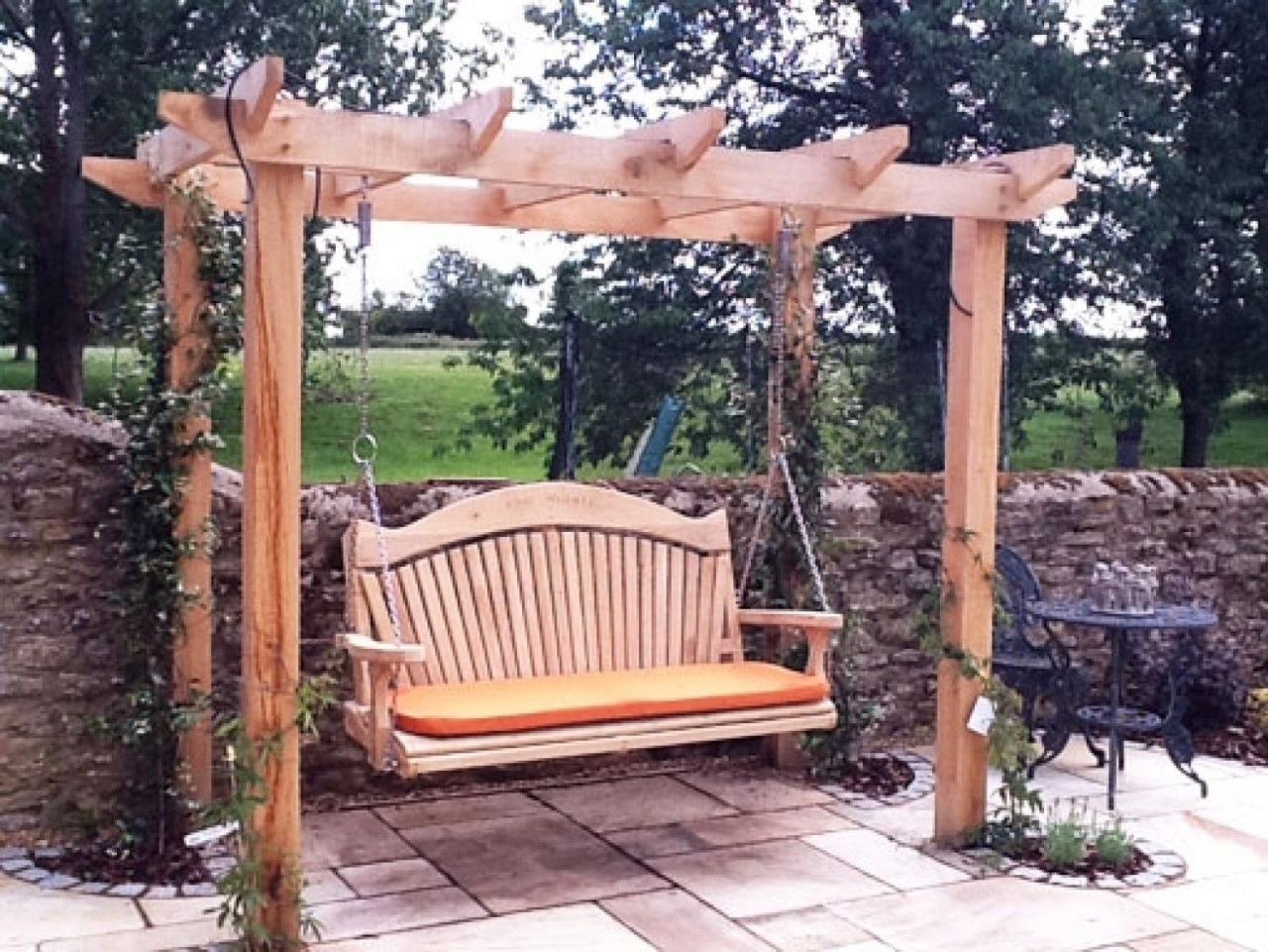
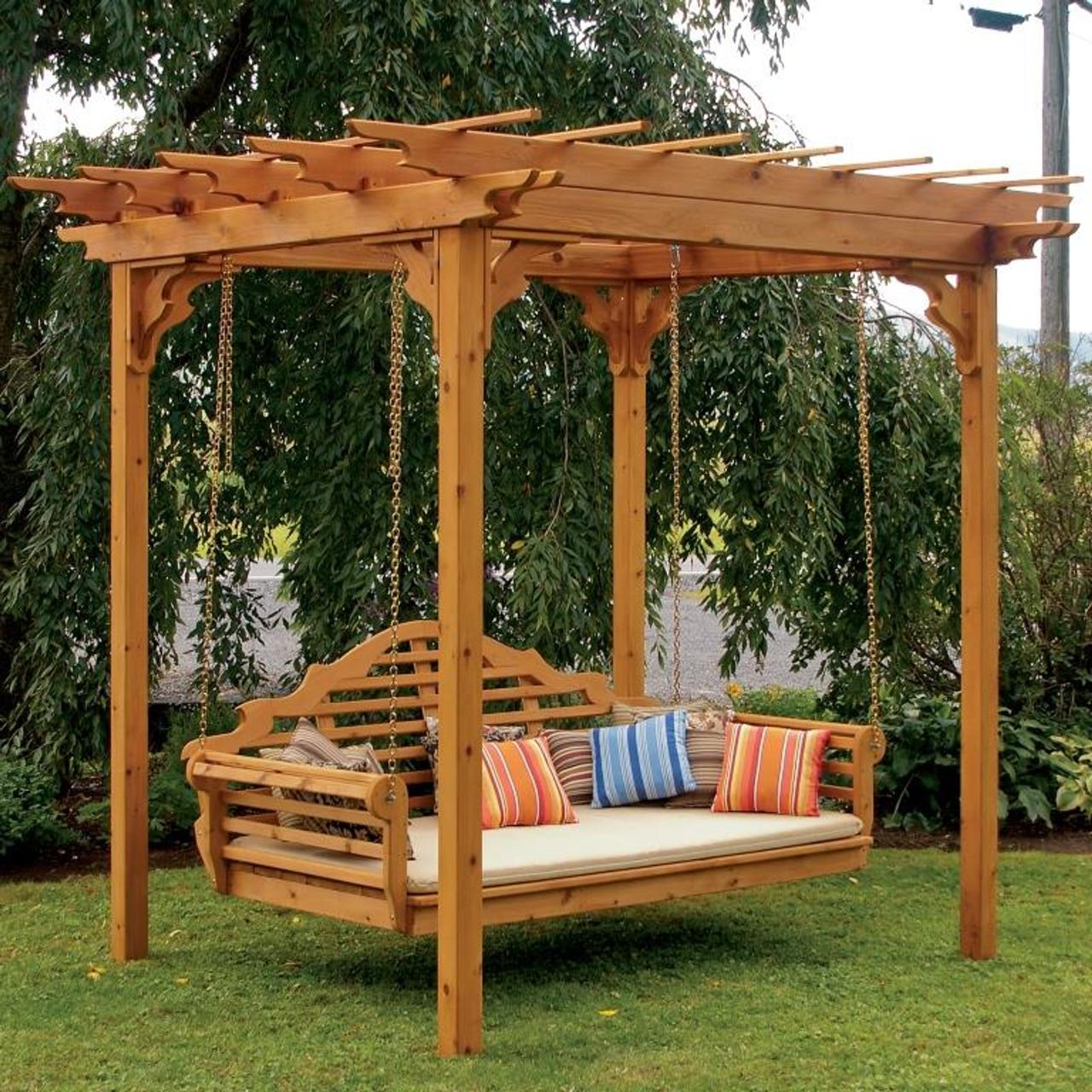
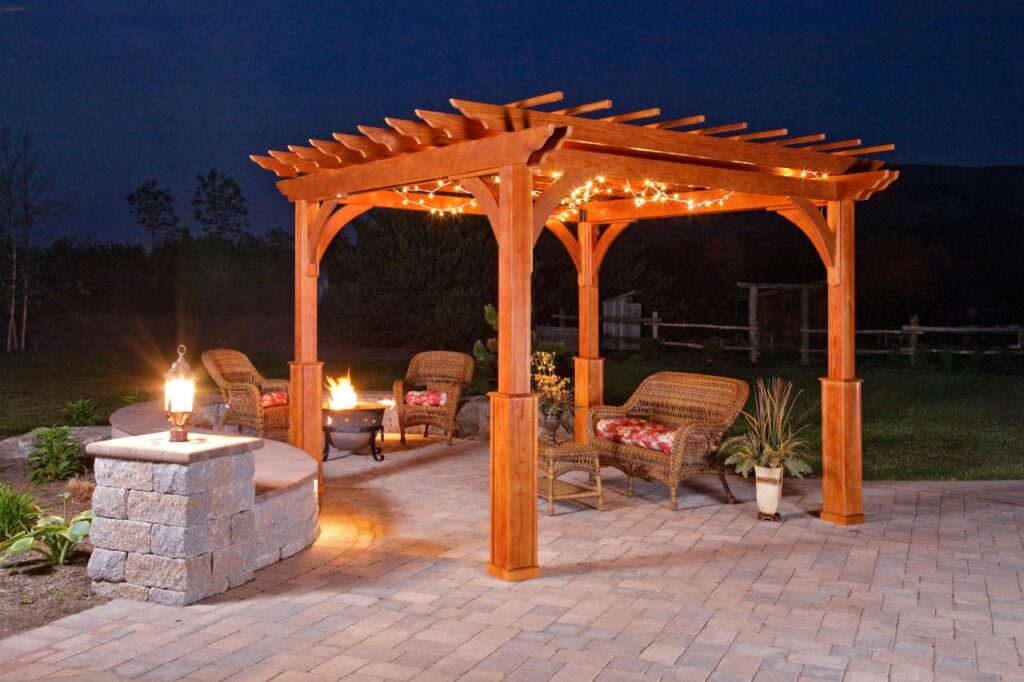
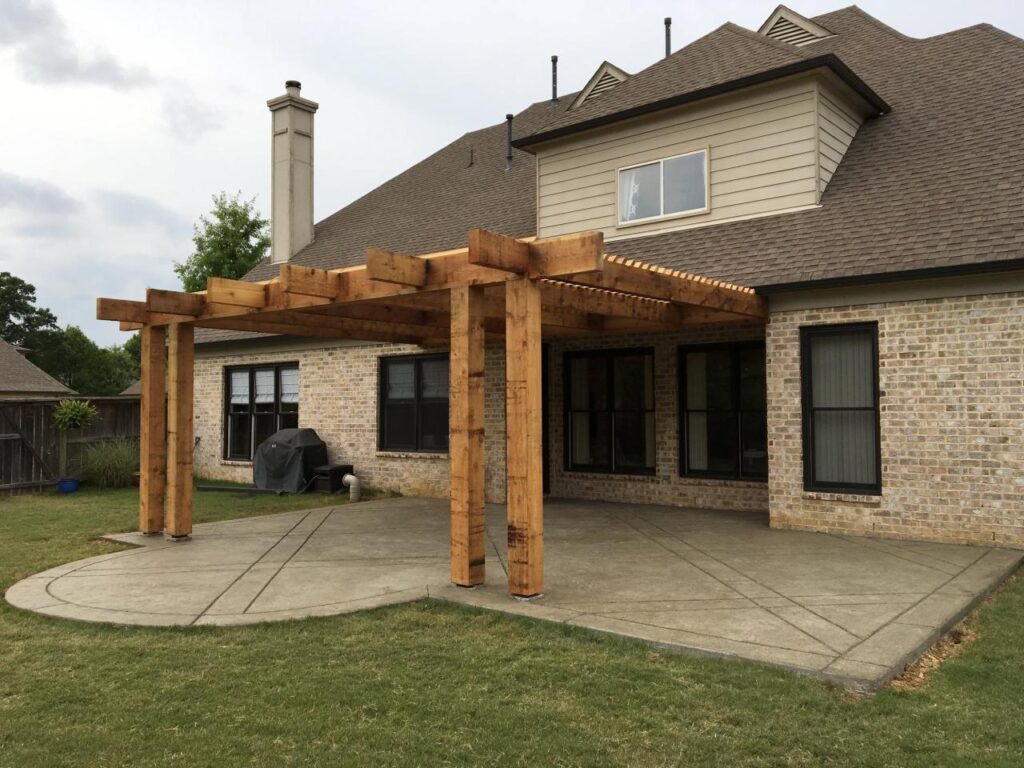
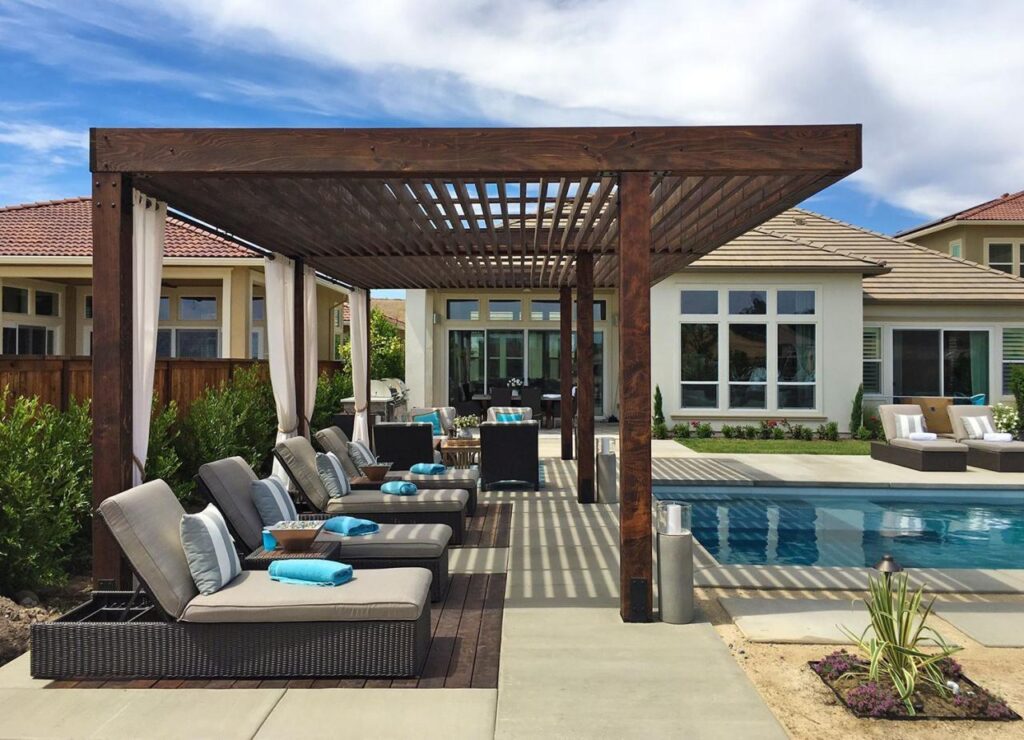

1 thought on “Wooden Pergola Swings: An Oasis of Relaxation and Style”